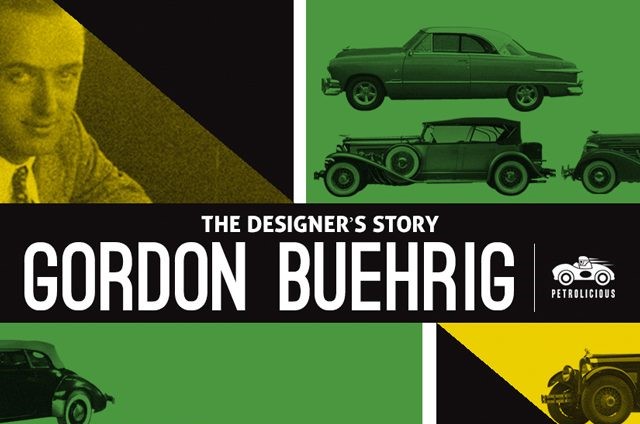Why didn't the Made in USA sports car design take off: Who is auto designer Gordon Buehrig?
Gordon Buehrig, who designs for serious luxury brands in the USA, also "fueled" a group of investors and got the idea of producing a sports car that would taste Europeans. However, the vehicle he produced was both unusual and expensive. Therefore...

Gordon Buehrig, who designs for serious luxury brands in the USA, also "fueled" a group of investors and got the idea of producing a sports car that would taste Europeans. However, the vehicle he made was both unusual and expensive. Therefore, the vehicle could not escape being “the only one of its kind”.
Sometimes, people who have put their feet on the ground for a brand or company and who have accomplished successful projects can go to the "dump yard of history" when it comes to their own projects, and go down in history with their failures... unfortunately sometimes "garbage" remains...
Gordon Miller Buehrig (June 18, 1904 – January 22, 1990) was an American automobile designer. Gordon Miller Buehrig was born in Mason City, Illinois on June 18, 1904 to a banker. He attended Bradley University in Peoria, Illinois, but did not graduate.
Gordon M. Buehrig produced very important and successful drawings for the luxury car brands of his time, thus making a serious career in the sector. The different versions of the "Auburn 851 Speedster", "Cord 810/812" and Duesenberg's "Model J" had made him a well-known, chanted man in the American automotive industry. Perhaps that is why Buehrig had little trouble convincing a group of investors for his project in the 1940s. Indeed, a handful of investors wanted a distinctive American car to be created for a European racing event in New York. As a matter of fact, such a disease emerged in America, especially after World War II.
One of the trials
American soldiers who went to fight alongside the Allies in Europe were fascinated by the cheap but impressive British, German and French sports cars they saw there. In fact, some of them were dying to bring these cars to the USA. The American industry also did not want brands such as Triumph, Mercedes, MG to "run around" in their neighborhoods or even "install" there. That's why American companies were stuck with the idea of producing a "European sports car" and made countless attempts for this.
The origin story of fiberglass-bodied cars, Corvette, Mustang and more has always been based on this obsession. The "only" car of the "TASCO" brand, which is the initials of the words "The American Sports Car Company", could not have come out of another idea at that time anyway...
Gordon Buehrig, who also designed the first model with a few of his friends for TASCO, of which he is one of the investors, took a few of his trusted friends with him for this. It designed a two-seater, long-nosed, short rear luggage compartment and a weight of aviation elements. Because at that time, automotive manufacturers almost forgot to produce automobiles, not dealing with aircraft production during the war, and could not get rid of that logic. Buehrig, too, would have proceeded with the same logic that he had not given up on the instruments used in the aircraft, especially in the interior of the vehicle, the lever-like controls, the shiny metal-plated instrument panel, and the round windshield, the glass roof like the bombers.
Has been in court
The roof, called the "T-top" which can be removed independently as two wings, was the most important feature of this car, and Buehrig's "magic freeze". The designer must have "poked the devil" that he had not neglected to patent this ceiling. As a matter of fact, the devil must have given him a very useful "tip" that years later, when General Motors used this ceiling in his Chevrolet Corvette in 1968, Buehrig took them to court and demanded compensation. Moreover, even though he worked at bizet GM in the 1920s... Although his car did not go beyond a single prototype, he could not beat the truth...
Going back to TASCO, the chassis of the vehicle was originally taken from a junkyard, a 1939 Mercury. A vehicle with fiberglass fenders, a plexiglass roof, and an aluminum body panel was seated on the heavily reworked and modified chassis. The nose design, in particular, made it both unique and seriously “repulsive”. TASCO also had a modified 150-hp V8 Mercury engine. It cost a total of 57 thousand dollars, but the mass-production version of the vehicle was calculated to be sold for as cheap as 7 thousand 500 dollars. However, this eliminated the profitability of the car, which was very expensive to manufacture, and made it impossible. So it was the inevitable end and the project was completely canceled. Gordon Buehrig, too, went straight back to his original business and was in charge of designing for Ford and Lincoln.
This unique prototype of TASCO is still alive. While this attractive blue car continues to amaze people, it participates in classic car shows and experiences the unbearable lightness of being "only in the world" and the sadness of loneliness in a museum in the USA.
